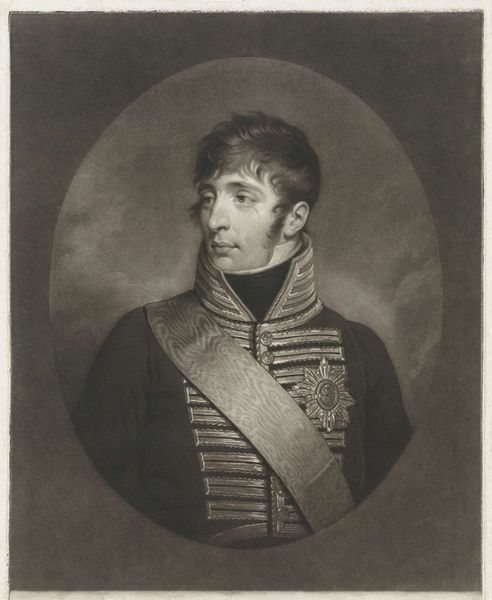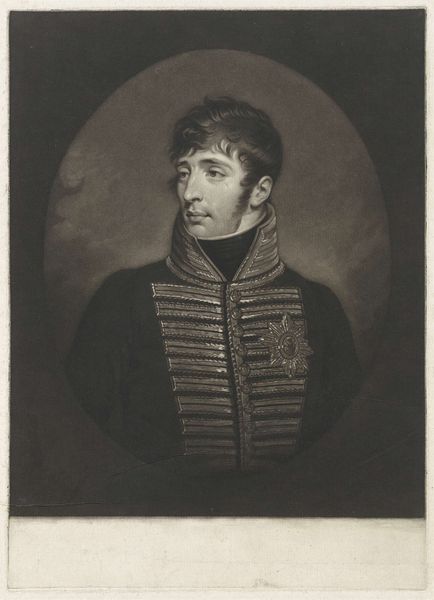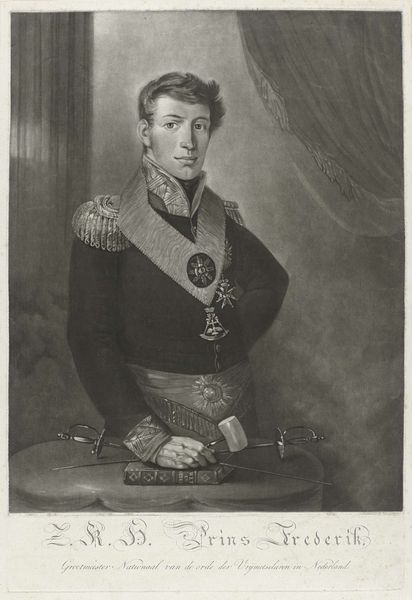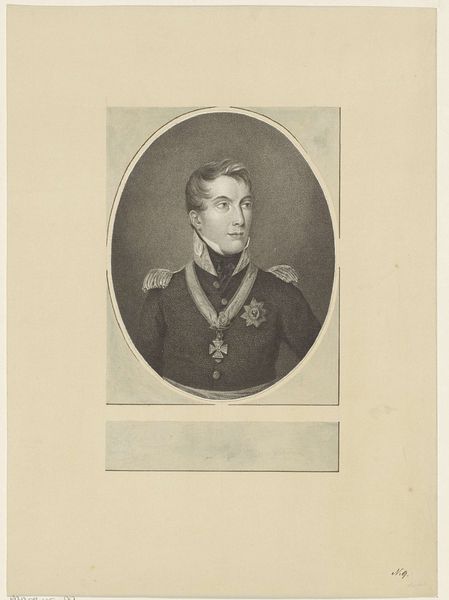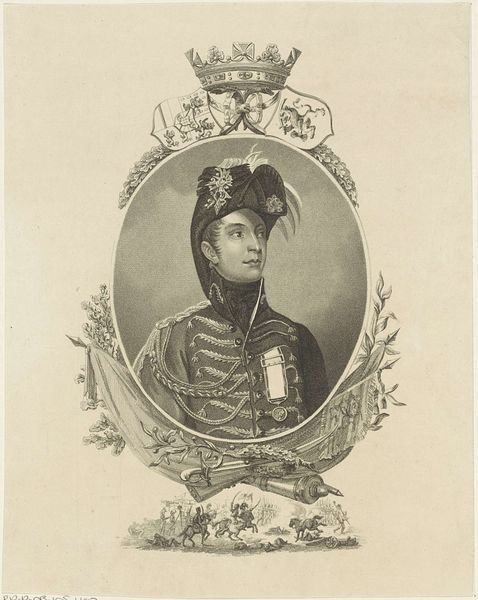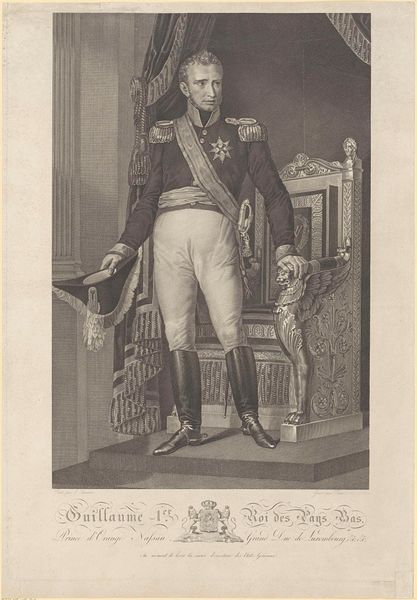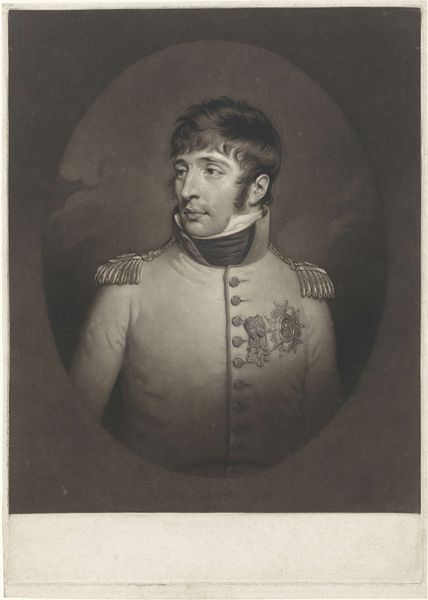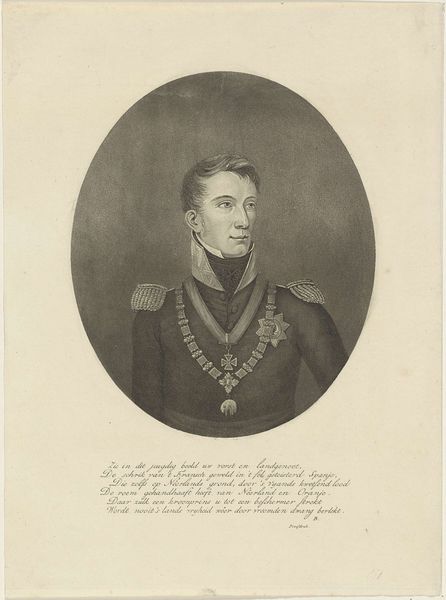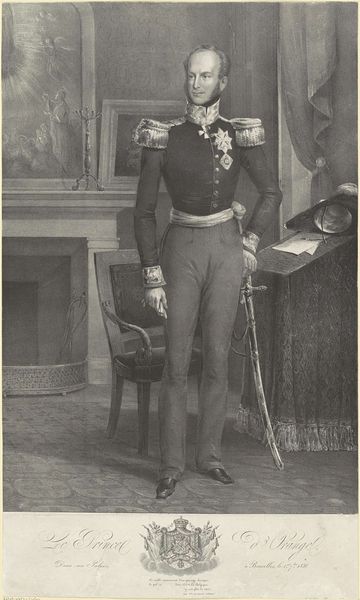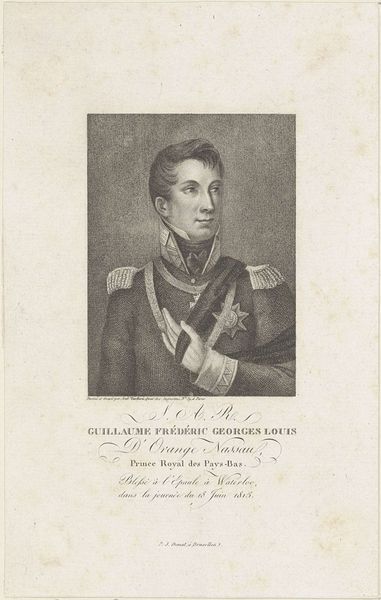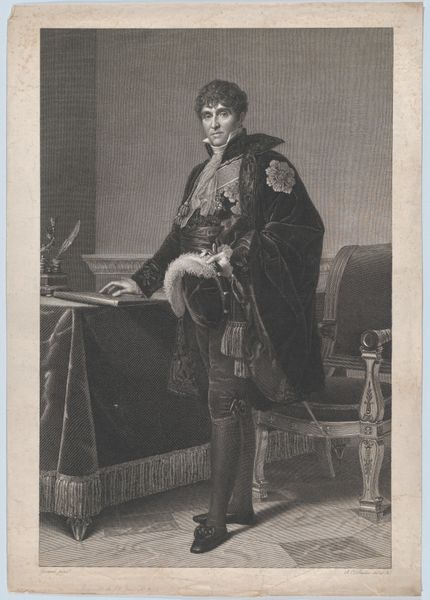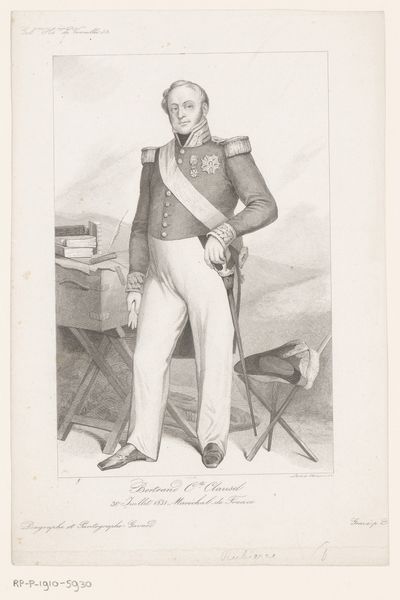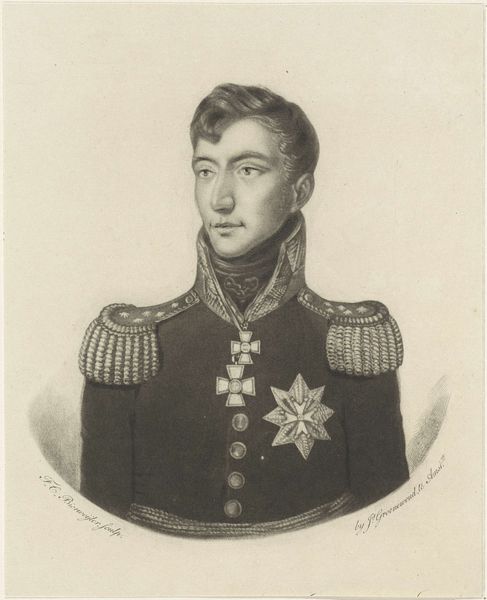
engraving
#
portrait
#
neoclacissism
#
charcoal drawing
#
figuration
#
pencil drawing
#
19th century
#
line
#
history-painting
#
engraving
Dimensions: height 357 mm, width 245 mm
Copyright: Rijks Museum: Open Domain
Curator: Ah, here we have Charles Turner's engraving, "Portret van Willem II, koning der Nederlanden," thought to be from around 1813. A fine example of Neoclassical portraiture. Editor: Immediately striking, isn't it? There's something coolly detached about his gaze, reinforced by the stark contrasts and that rather imposing sword he’s holding. Curator: Indeed. Turner, as an engraver, meticulously reproduces the lines and details, likely from an original drawing or painting. Note how the lines define the form. He transforms material into an easily reproduced image for mass consumption. Consider also the social function of portraiture at the time: to disseminate images of power and reinforce a particular social order. Editor: I’m more fascinated by how Turner has constructed the composition itself. The linear quality is exquisite, directing the eye towards the sitter's face. The arrangement of light and shadow creates a palpable sense of depth, despite it being a flat print. Curator: Engravings like this, beyond their aesthetic value, speak volumes about 19th-century production and distribution of imagery. This image would have been part of a network of visual representation carefully constructed to shape public perception of the monarchy. Notice the crisp rendering of the military regalia? Turner emphasizes Willem’s position. Editor: Yes, and that precision serves a formal purpose too. It emphasizes his upright bearing and his gaze looking optimistically into the future, almost mythologizing him into something larger than life. Note that Neoclassical adherence to idealized form, a conscious nod back to classical statuary, instilling a sense of timelessness. Curator: Precisely! Each line, each shadow, manufactured under certain economic and political conditions serves to legitimize the monarchy’s power, transforming a person into an icon. Editor: It’s remarkable how the interplay of form and symbolism elevates the image beyond a simple likeness into an emblem of leadership, carefully designed and expertly executed. Curator: So, what starts as a portrait crafted through material processes transforms into a potent instrument within the power structures of the era. Editor: And its impact, filtered through artistic skill and compositional decisions, reveals enduring insights into human ambition, doesn't it?
Comments
No comments
Be the first to comment and join the conversation on the ultimate creative platform.
